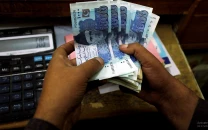Permeate gas can solve crisis
Streams of Kandhkot gas field sufficient to fight energy crisis, end outages

Pakistan’s energy and economic situation continues on a downward trajectory as electricity shortfall has dropped to 6500 megawatts (MW), while the current circular debt stands at approximately Rs2.253 trillion and oil import bill increased by 95.9% to $17.03 billion during July-April FY21- 22.
“Amidst a worrisome situation for the general public, the government and policy circle are aiming to cut down reliance on excessive utilisation of expensive imported fuel, which is hitting the foreign reserves adversely,” said energy sector stakeholders and experts.
Therefore, the focus has now shifted to the utilisation of indigenous resources. Pakistan is blessed with good reserves of low BTU gas with high impurity content and has, therefore, extreme limited usage, they said.
“This low BTU gas has been utilised by Engro Powergen Qadirpur Limited (EPQL), which is a dual-fuel plant primarily designed to run on this specific gas to generate cheap and affordable electricity,” said a power sector expert.
However, the depletion of low-BTU gas from the Qadirpur gas fields has forced the company to look for alternate fuel sources to operate its complex at maximum base load, he added.
Hence, the company has identified the Kandhkot gas field as a viable source of replacement gas and seeks allocation of approximately 30-50 mmscfd of gas volume from Kandhkot to the Qadirpur plant on an ‘as-and-when available’ basis, he added.
This will have immense benefits for both the EPQL project and the national economy in general, along with advancing the power sector of the country.
With just 30km distance between the Kandhkot gas field and the Qadirpur plant, by building a pipeline the usage of Kandhkot gas can begin within the timeframe of just three months, said the expert.
It is important to note that the utilisation of Kandhkot gas will not require any additional treatment or effort from the Qadirpur company. Any other consumer would need to set up a treatment/processing facility at a significant cost (estimated to be around $120m) and would require approximately two years for its implementation.
Sourcing Kandhkot gas for the Qadipur plant can provide a potential benefit of over Rs300 billion to consumers over the next 13 years and produce approximately 21 billion units until 2035, of which around 15 billion units will be generated through the supply of gas from Kandkhot. This will not only provide foreign exchange relief of almost $2 billion against imported coal/fuel but also lower the overall energy basket price of the country’s power sector, the experts added.
The supply of the gas is known to be proposed on ‘as-and-when available’ basis by the 226 MW power plant, and with the allocation of approximately 30-50 mmscfd of gas volume from the Kandkhot gas field, the company can provide further 110 MW of power to the national grid. This forecast could also be a convenient substitute to tackle winter season shortages.
Due to the Russia-Ukraine conflict, the high price of global commodities such as coal, oil and RLNG are said to stay as they are for another two years. With the country looking to switch to indigenous resources, the richly available permeate gas from Kandkhot is a prime solution.
It is believed that this will help the government’s energy agenda of import substitution, its management of the current electricity shortfall, easing foreign reserves while providing cheaper and affordable electricity for the country, they added.
Published in The Express Tribune, September 27th, 2022.
Like Business on Facebook, follow @TribuneBiz on Twitter to stay informed and join in the conversation.


1728020501-0/Express-Tribune-Web-(13)1728020501-0-208x130.webp)
















COMMENTS
Comments are moderated and generally will be posted if they are on-topic and not abusive.
For more information, please see our Comments FAQ